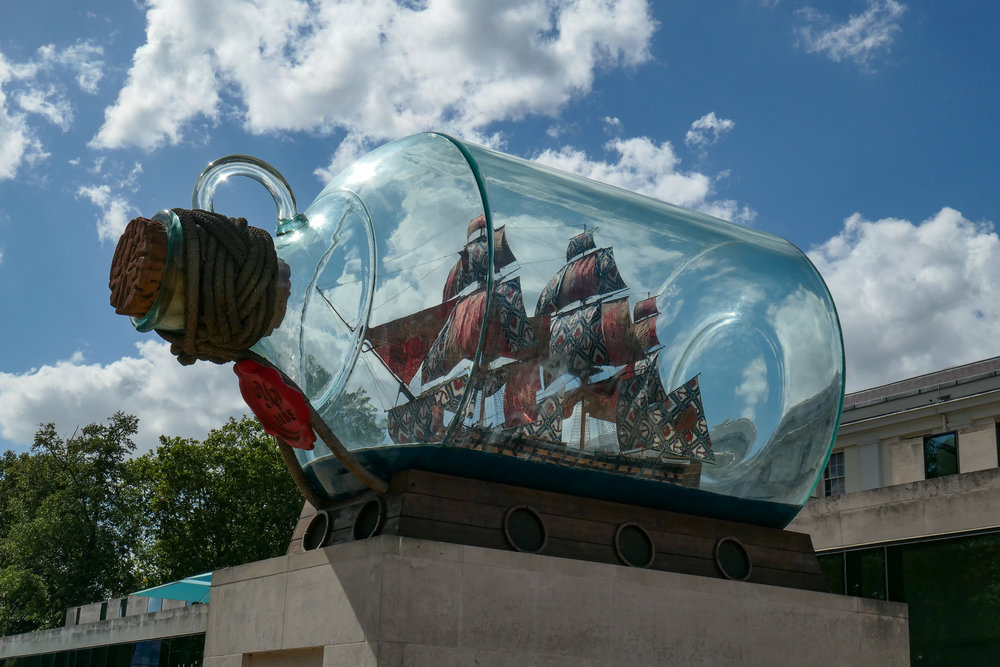
The new Leica C-Lux combines the popular one-inch sensor, ideal for compact travel cameras, with a super zoom that almost reaches as far as the lens on the much larger V-Lux — a camera which shares the same sensor but occupies a much bigger body. On paper, then, there is not much not to like about this mini monster that hides and then reveals so much optical power. In this instance, the designers have indeed managed to squeeze a quart into a pint pot.
One-inch sensor compacts have recently become popular among travellers, specifically because the sensor is more than good enough for general purposes yet permits smaller bodies and longer lenses than would be feasible with even micro four-thirds. Nikon started the genre back in 2011 with its Nikon 1 system, but it is Sony that has done most to popularise the sensor size through the success of the RX100. Launched in 2012, the RX100 has gone through six versions. But it is the newest RX100, the Mark VI, that competes most directly with the C-Lux in terms of zoom capability.
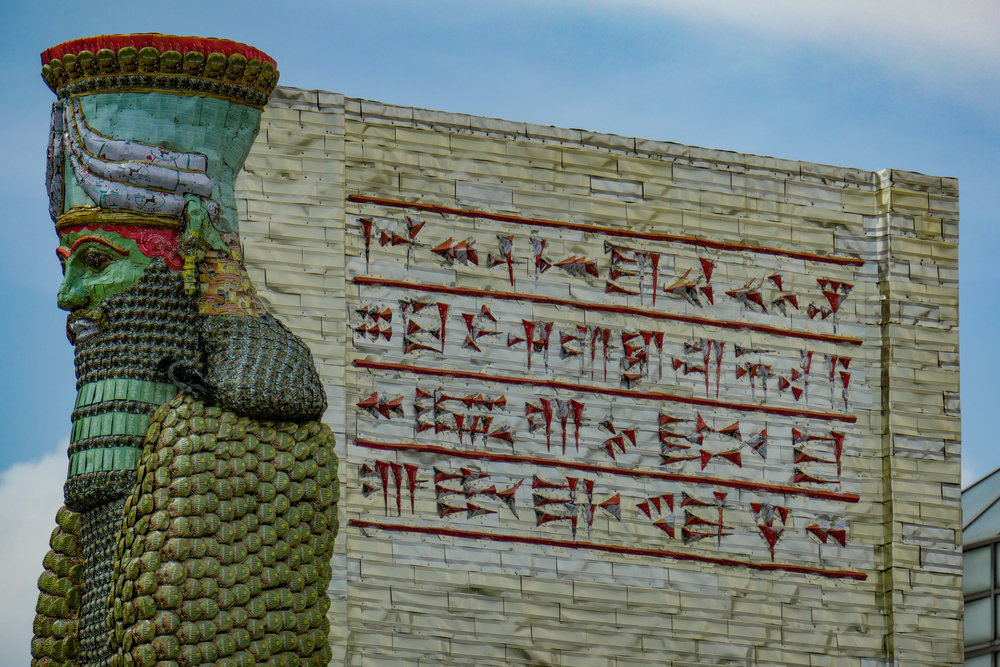
For the record, I refer to the C-Lux throughout but bear in mind that it is virtually identical to the Panasonic Lumix TZ200. So, in general, all my comments apply equally to the Panasonic. I will explain later why I think the Leica-branded version is the better buy.
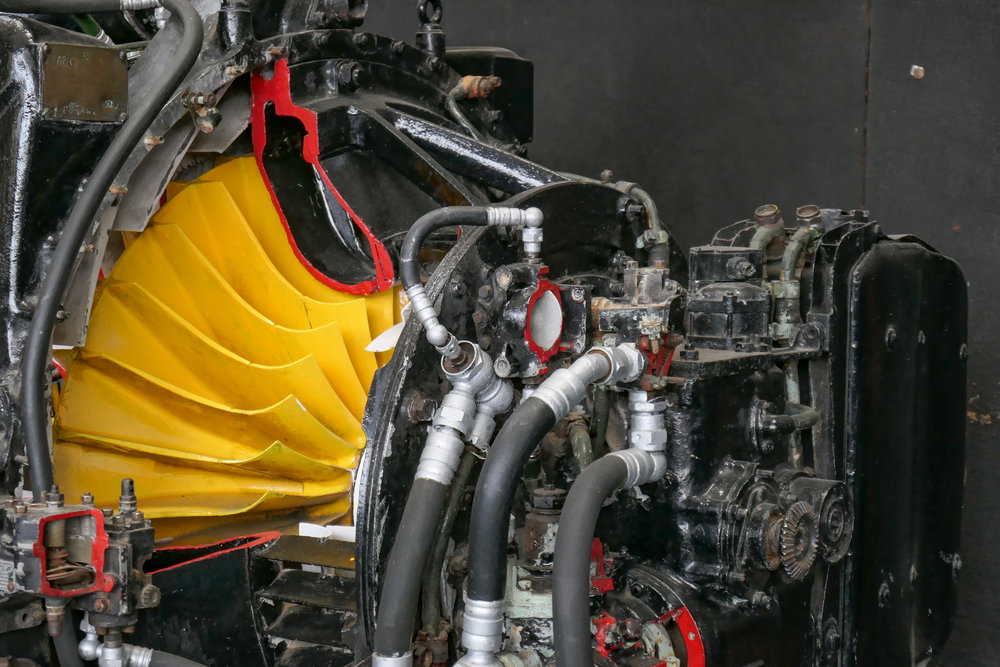

I have just spent a week with the C-Lux to become acquainted with the feel of the camera, the handling and controls and how it stacks up as a travel companion. On the introduction day, June 15, we carried a comprehensive review of the C-Lux written by Jonathan Slack who had had the opportunity to take a prototype to Crete for an extended photo session. His portfolio gives an excellent impression of the capabilities of this little camera and of the image quality you can expect.
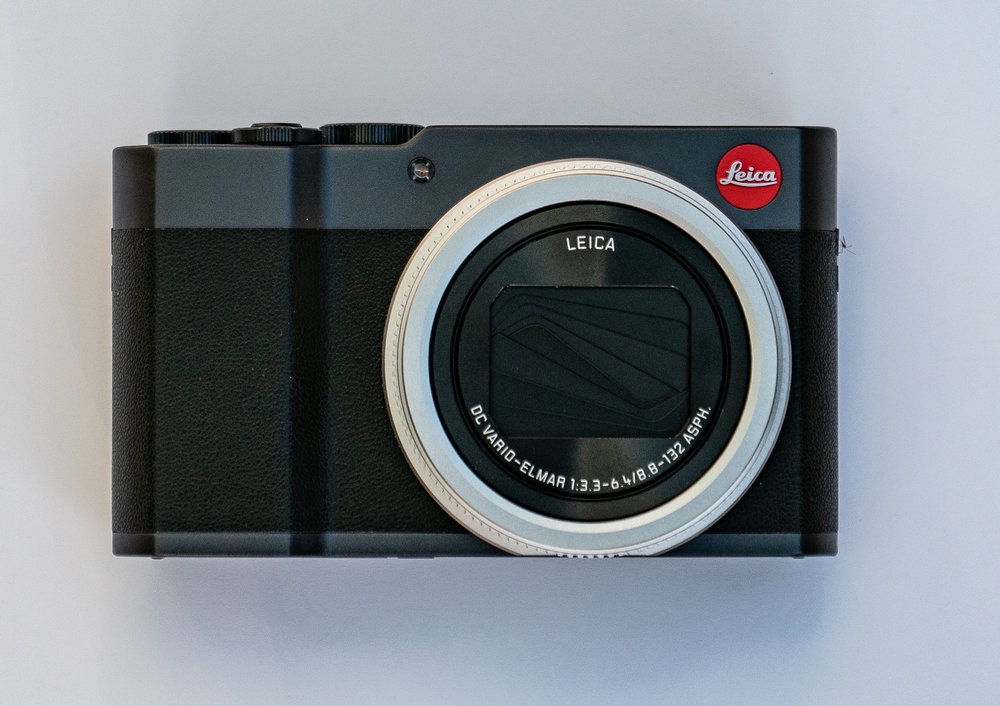
Design
The C-Lux is a very handsome camera with an impressive array of manual controls and sensible menus. It has a metal body and gives every impression of being sturdy and secure. While it isn’t as small as you might expect, it handles really well. It has a small finger grip which is comfortable and helps keep the body stable (a good thing in view of that super-zoom lens).
It comes in two colours — two-tone blue or two-tone gold. Frankly, I am not sure who is going to buy the bling version. I’d stick with blue if I were you; it definitely looks more businesslike.
Handling is enhanced by a faux leather cover which is preferable to the smooth, slippery surface of some cameras. The top plate has a 17mm depth which serves to achieve a very harmonious relationship with the lower covered section of the body. With the red dot, it masquerades effectively as a true Leica (ignoring the fact that it is made by Panasonic in China).
Below: Full frame on the left taken indoors at ISO 1000 (f/3.7, 1/80s), 35mm. To the right are two large crops from the same image. Click to see them full size.



The lens housing is a whopping 59.2mm in diameter, dominating the front of the camera. No doubt this jumbo dimension is necessary to house the enormous zoom which extends out of the camera to 75mm and then has to snake back into the housing in a remarkable feat of prestidigitation. The fact that the lens housing is silver (on the blue camera) further emphasises its size and I would have been happier to see the lens in body colour or black.
The 15x optical zoom extends from f/3.3 to f/6.4, a necessarily slower compromise in designing such a long reach. The mechanical shutter tops out at 1/2000s but the electronic shutter extends this by three stops to 1/16000s. ISO range is from 125 to 12800 with the option to push this from 80 to 25600. The standard auto setting keeps ISO down to 1600 and this is the setting I used during the review. There are the usual metering modes, multi, centre-weighted and spot.


The optical zoom ranges from 24mm to a prodigious 360mm. This can be doubled to 720mm using the digital zoom but, I know, few bother with this unless they are wishing to produce an out-of-camera image for immediate use. In most cases simply cropping the image in post processing achieves the same result.
Bentley Boys, full frame and crop: 35mm, 800 ISO at f/5
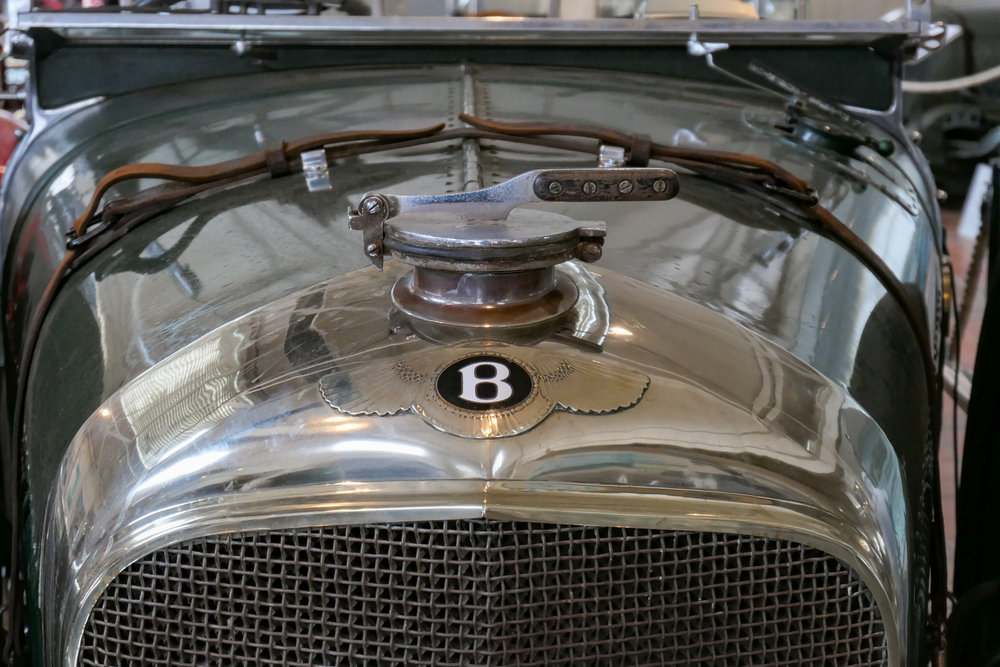

The camera incorporates optical image stabilisation with 5-axis stabilisation available in video mode. Auto focus is contrast detect with the usual range of settings, including multi-area, centre, selective single point, face detection and tracking. Focus can also be initiated by touch.
In normal mode, the minimum focus distance is 50cm while in macro mode you can get down to 5cm.

The fixed 3in screen has a resolution of 1.24 million dots while the electronic viewfinder sports 2.3 million dots and a magnification of 0.53x.
The C-Lux can shoot up to 10 frames per second in continuous mode. In video mode MPEG-4, AVCHD and H.264 are supported. There is a built-in microphone but no socket for an external unit
Panasonic is known as a leader in video but, as usual, I cannot comment on this because I am looking at the C-Lux entirely as a stills camera. There are many reviews on the internet, either of the C-Lux or its sister TZ200.
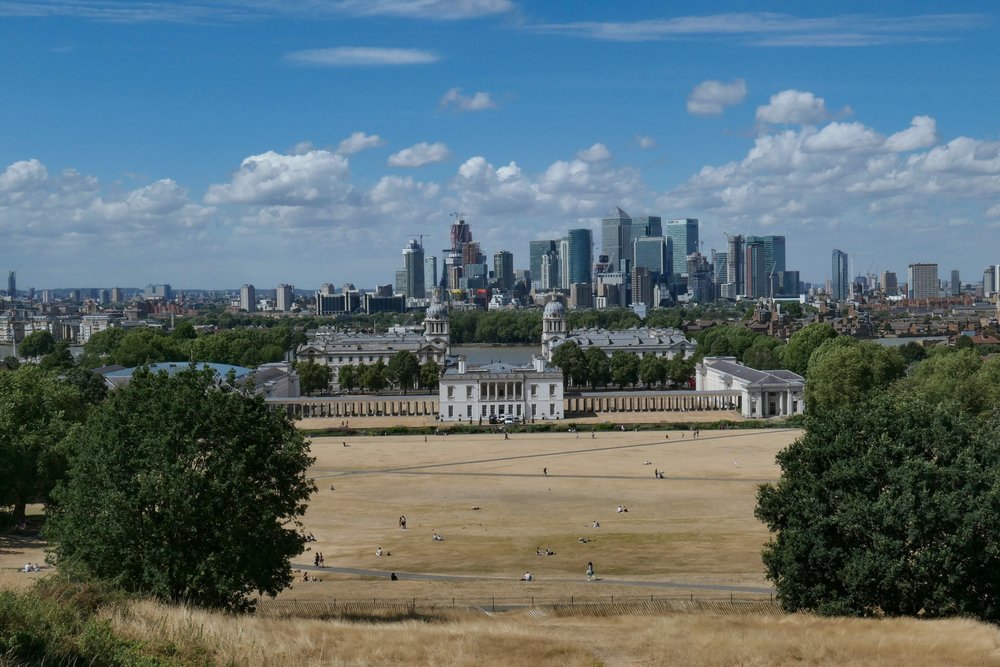

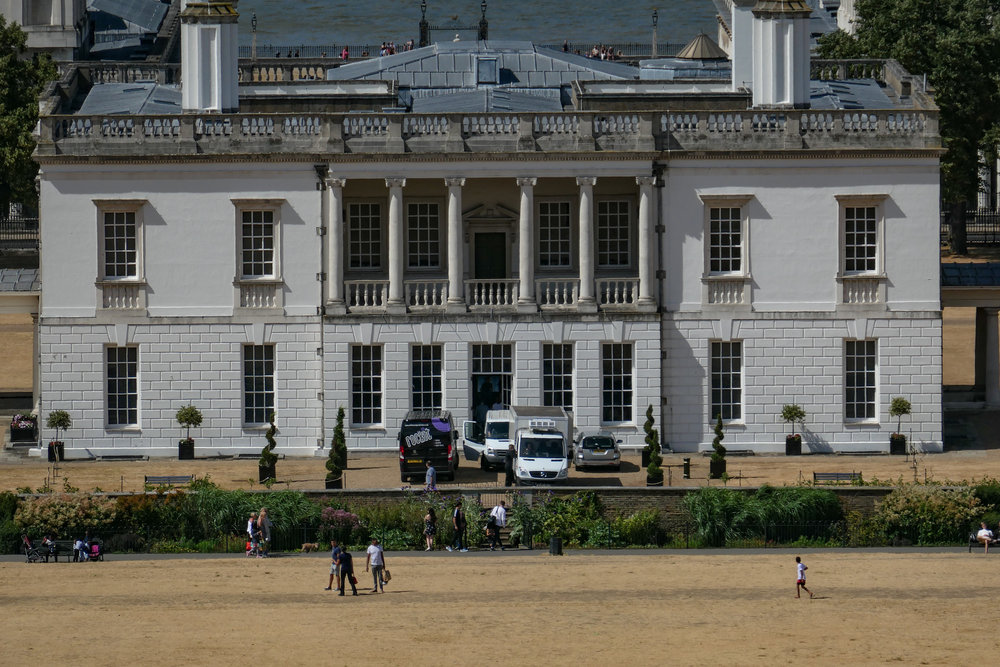
Controls
The top plate accommodates four controls — a precise on/off switch which I much prefer to a press button; the mode dial; combined shutter release and zoom lever; the movie button; and an extremely solid and well-damped click thumb dial which can be programmed for various functions. Most photographers will be happy to remain with the default setting which controls aperture and/or speed in A, S, M or P modes. These controls are all placed on a stepped down section to the right of the top plate, thus achieving a flat overall plate with no protrusions, ideal in a pocket camera. Also on the top plate is the cover of the tiny pop-up flash which I haven’t used.

The back of the camera is dominated by the bright 3in screen with a wide range of touch features which aid menu selection, shooting options and review adjustments. It is fixed in place, which traditionalists will applaud. If you want selfie mode or low-level shots from a cantilever screen you will have to look elsewhere.
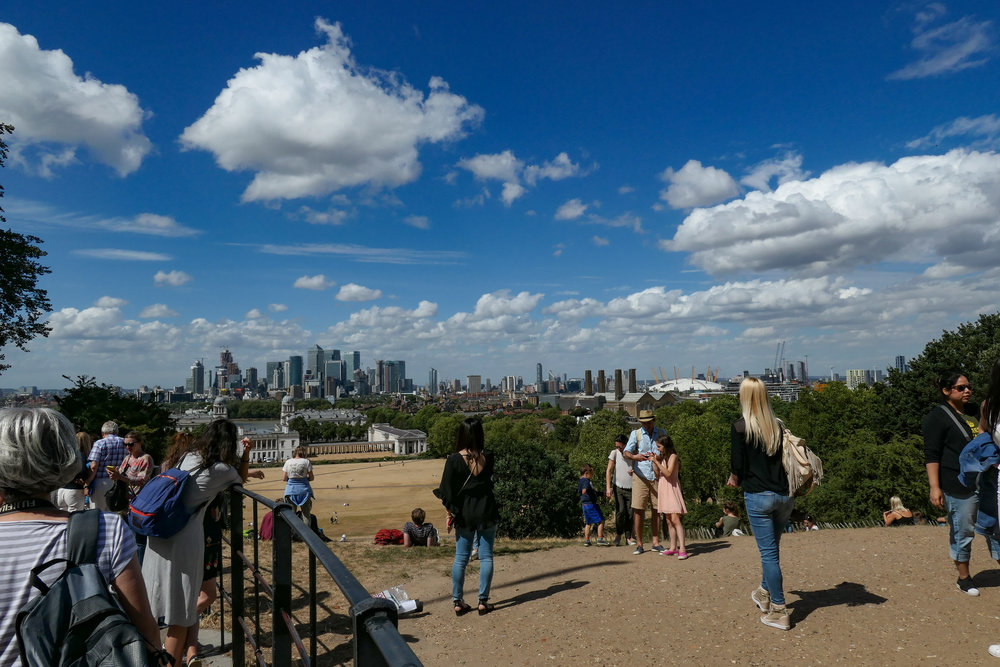

The button layout is typical Panasonic, with the flash pop-up switch, AE/ AF lock, three programmable function buttons, the usual display button and a four-way pad which, by default, is set to exposure control, white balance, shooting mode and macro. The centre button combines the menu and set functions. All these buttons can be reprogrammed to your preferences.
To the right of the camera back is a small thumb rest which, in combination with the front grip, makes this camera very stable in the hands.
The fixed 2.33 million dot viewfinder is not as large as you will find on, say the CL, but Leica has squeezed in as much real estate as it could possibly manage given the space available. See my later comments on the viewfinder in use.
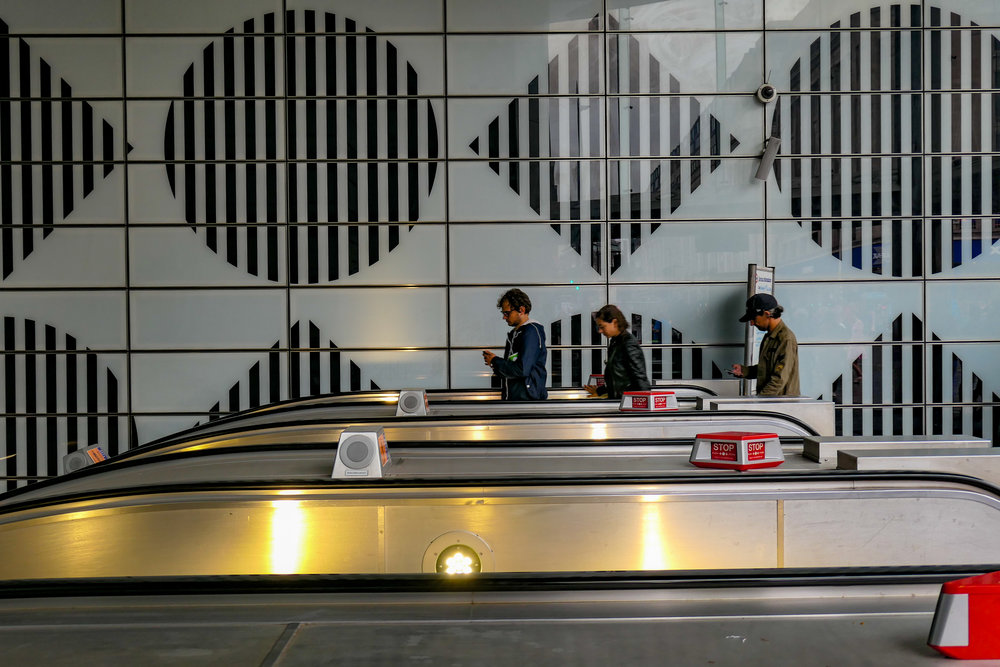
There is a toggle switch to the right of the viewfinder to enable on-the-fly change between screen only, viewfinder only or automatic switching. I find Leica’s efforts here to be exemplary and I only wish other manufacturers would provide a similarly effective control function for the viewfinder. It is a function which I use constantly and to have to delve into the menus to change the setting (or to programme some other button to this function) is frustrating.

I really cannot fault the control layout of this camera. While it isn’t typical Leica (but what is typical Leica these days with the SL, CL and M all ploughing their own furrow?) it is certainly typical Panasonic. Everything is logical, the menu system is as simple as is possible on with today’s complex digitals, and the camera can be customised for simplicity. You can set it up for basic operation without too many distractions.
The menu, too, is easy to navigate and, next to Leica’s systems on its German-made cameras, represent one of the finest arrangements I have come across. By default, Fn3 is set to access the familiar Panasonic quick-menu screen which is straightforward and intuitive with frequently accessed settings gathered in one place. Again, this screen is customisable so you can select just the features you need.

Instead of traditional strap lugs, the C-Lux (in common with almost all smaller compacts of this type, including the Sony) has flush slots which require a string-type strap or wrist strap. The C-Lux is supplied with a silk wrist strap which perfectly complements the camera visually and is very convenient in that it takes up little space, especially when cramming the camera into a pocket.
Unfortunately, it is potentially dangerous in that it has no adjustment to achieve a closer fit on the wrist. After a couple of near misses. I solved the problem in a rather inelegant way by attaching a small rubber band which can be pushed up and down the strap. A very small rubber ring would be better but difficult to find. This mod ensured that the camera stayed on my wrist with no chance of the strap passing over my hand. A better solution would be a more substantial wrist strap with string attachment and restraining ring.

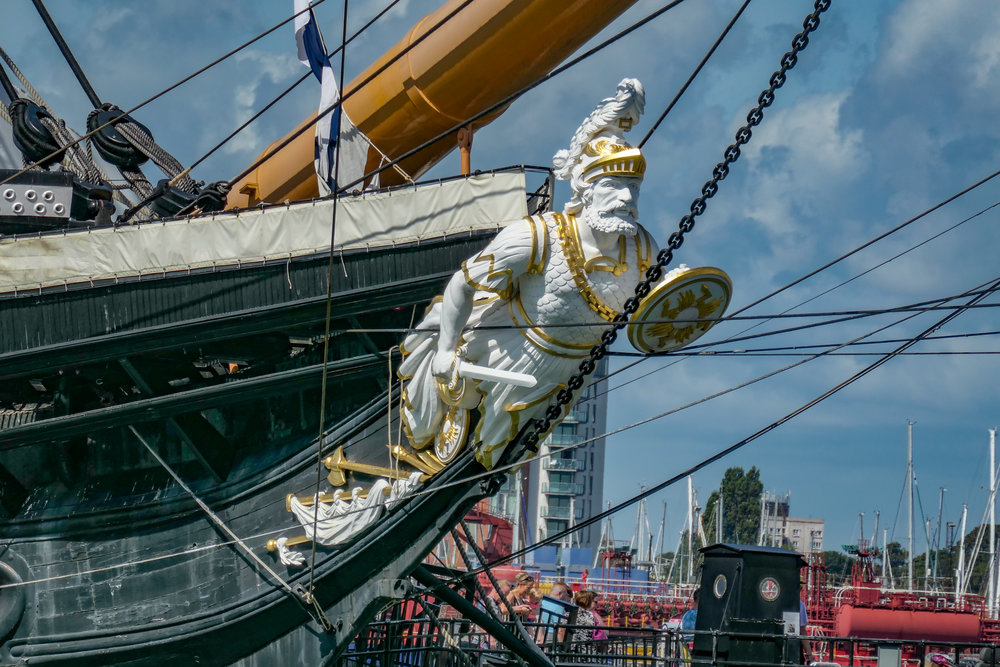
With a lens extending to 360mm it’s good to have extra grip and there is no doubt that the C-Lux feels much more steady and firm in the hands than, say, the smaller and smoother Sony RX100. In size, it provides a good compromise between miniaturisation and handling. It is even pocketable, provided you are not wearing the latest skinny jeans. It fits happily in the pocket of a pair of chinos or summer shorts and I doubt even Mae West would bat an eyelid.
The 20MP CMOS sensor in the C-Lux is familiar to Panasonic users and is probably identical to that used in the larger Leica V-Lux (Panasonic FZ1000). As with all one-inch sensors, it has a crop factor of 2.7 in relation to full frame with 9mm being roughly equivalent to 24mm and 72mm to 200mm. On the C-Lux the longest reach, 132mm equates to 360mm in full-frame equivalence.
Below: An exercise in cropping. On the left is the full frame image of the Portsmouth Naval Dockyard taken at full chat at 360mm (f/6.4, 1/800s). Centre is a 100% crop from the same image while to the right is a crop too far — but not quite because the resolution is still impressive



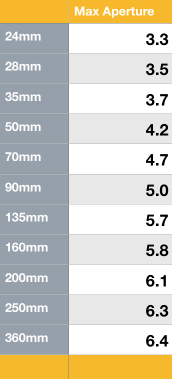
I’ve mentioned the compromises that must be made when a zoom lens reaches for the sky, as does the DC Vario-Elmar of the C-Lux. The aperture range is a natural casualty of such an optimistic design and it is no surprise that the C-Lux has a range as slow as f/3.3 at 24mm to f/6.4 at 360mm. And, in common with zooms on other cameras, it narrows quickly once you abandon the widest 24mm. At 50mm, for instance, your maximum aperture is only 4.2. This is considered slow even on a full-frame camera and restricts the ability to achieve a narrow depth of field. So f/4.2 on a one-inch sensor isn’t much to write home about when it comes to subject separation.
But as you can see from the table, Sony’s decision to limit the RX100 VI zoom to 200mm has given latitude with aperture. The Sony starts off half a stop faster at 24mm and at 200mm, its maximum, is at f/4.5 compared with the C-Lux at f/6.1.
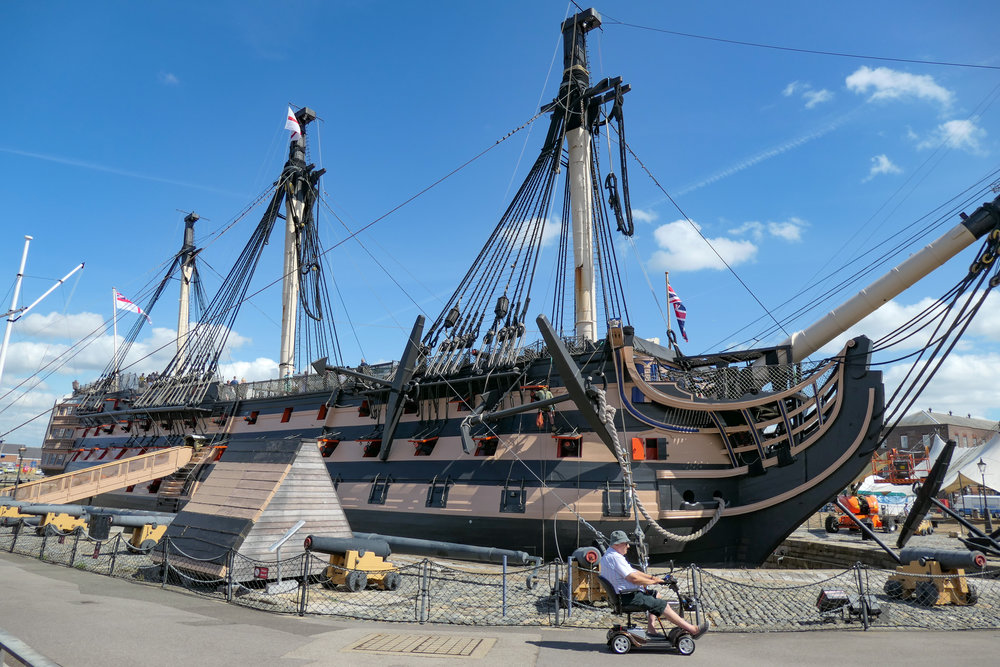


Nevertheless, wide aperture isn’t everything and, let’s face it, much of our day-to-day photography is done at between f/4 and f/8 — especially casual street photography. With the one-inch sensor, you get a much greater depth of field at these apertures than you would get with a Leica M or a Fuji X100F. And a slow aperture range, of course, has nothing to do with image quality. Leica proved this with the X Vario with its f/3.5 to 6.5 zoom (and that at a mere 70mm). It was criticised initially for its slow aperture range but users have come to realise that the lens is tack sharp and immensely capable.
It is quite remarkable that this lens with its massive range is only half a stop slower at the wide end and approximately one stop slower at 200mm than that of the Sony. And the C-Lux gets you further to a whopping 360mm with barely a decrease in aperture value.

If this camera is ticking all the right boxes I wouldn’t be concerned at all about the slightly slower aperture range. You will choose the C-Lux because you want the longest zoom you can get in a pocket camera and you shouldn’t worry about the odd half stop. It’s not as though you will be buying this camera for its bokeh performance.
Comparisons
The C-Lux has just one direct competitor, the Sony RX100 VI but even that has a much shorter range — topping out at 200mm compared with the Leica’s 360mm. The extraordinary range is the Leica’s USP and it will be a decisive point for many would-be purchasers. If you want this sort of reach in a very compact camera then the Leica is really your only option.
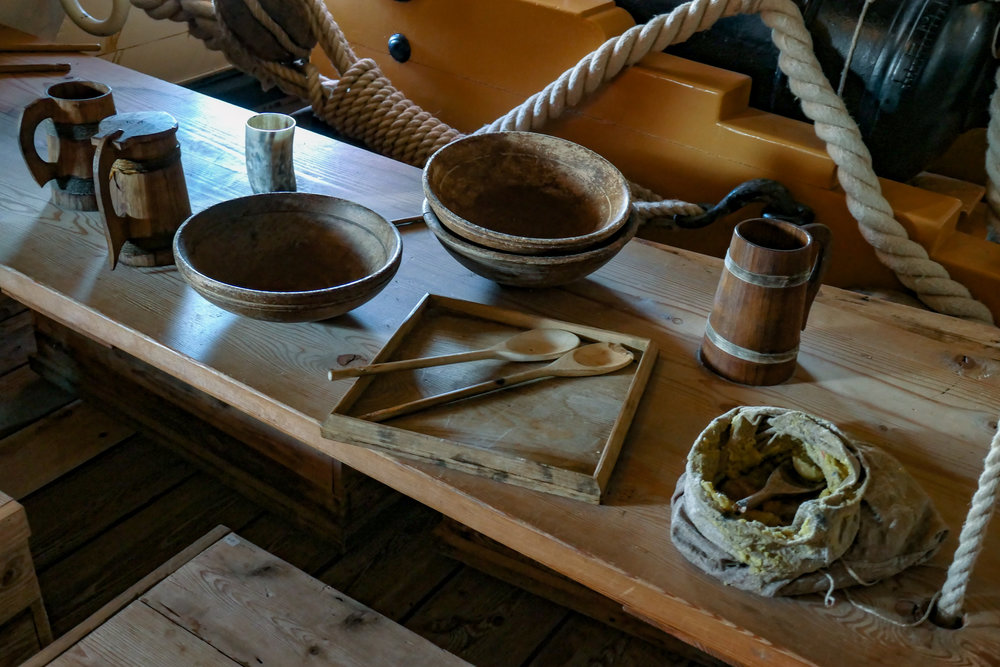
I will be writing a longer comparison of these two cameras when I have published the review of the Sony. What is undeniable, however, is that the Sony is smaller and considerably so.
Curiously, the C-Lux is almost as big as the Leica D-Lux. The D-Lux (Panasonic Lumix LX100) measures 115 x 66 x 55mm compared with the C-Lux at 111 x 66 x 45mm and weighs only 53g more at 393g. It has a much bigger sensor (4/3) but cannot compare on zoom range with its meagre 24-75mm reach. However, that lens is much faster at f/ 1.7-2.8 compared with the f/3.3-6.4 range on the C-Lux.
With the larger sensor, the depth of field on the D-Lux is potentially much narrower at all apertures than the C-Lux could hope to achieve. The Leica Vario Summilux on the D-Lux is one of the sharpest and fastest compact zooms on the market and, of course, you have greater cropping potential from 4/3 than from a 1in sensor. Incidentally, don’t think that the D-Lux uses exactly the same sensor area as m4/3. It is a cropped version, some 10% less than m4/3, hence a crop factor of 2.2 (compared with 2 for m4/3 and 2.7 for the C-Lux 1in sensor)

I mention this only in the context of size. The desire to shoehorn such a long lens into the C-Lux has resulted in a larger body which rather detracts from the benefits one would hope to gain by moving to the smaller sensor.
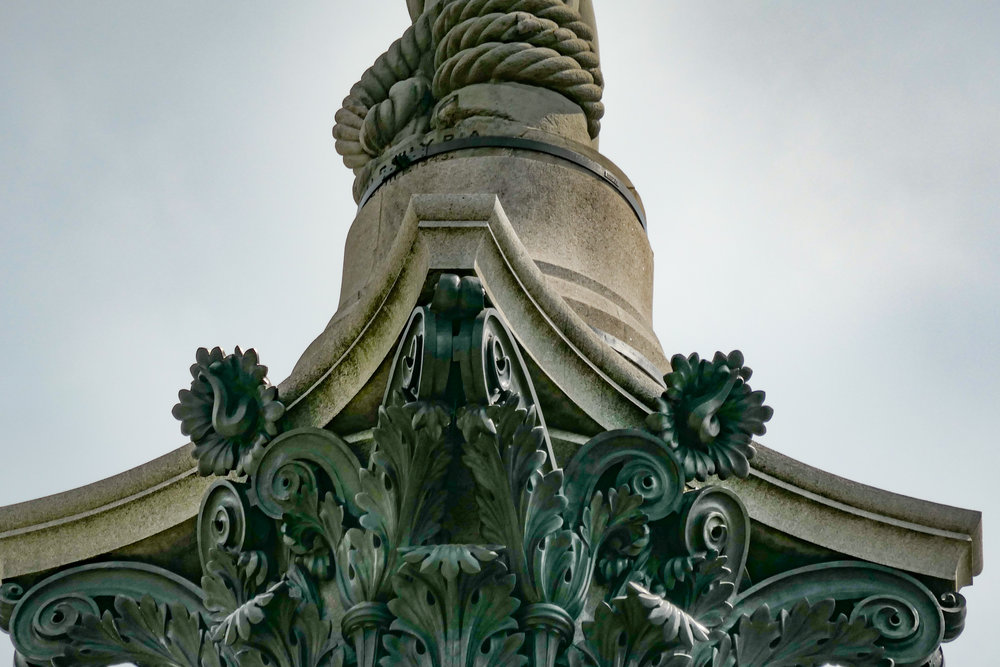
If you are considering the C-Lux, therefore, and do not need such a long zoom, then the D-Lux could be a better bet. You could crop a D-Lux image to the equivalent of 150mm, at least, while maintaining similar image quality to the C-Lux at that focal length. The D-Lux, too, is £75 cheaper than the C-Lux. Do bear in mind, however, that while the C-Lux is a new camera and will have a long shelf life, the D-Lux will be superseded as soon as Panasonic gets its act together and announces the LX200 which, so far, has had an elephantine period of gestation.

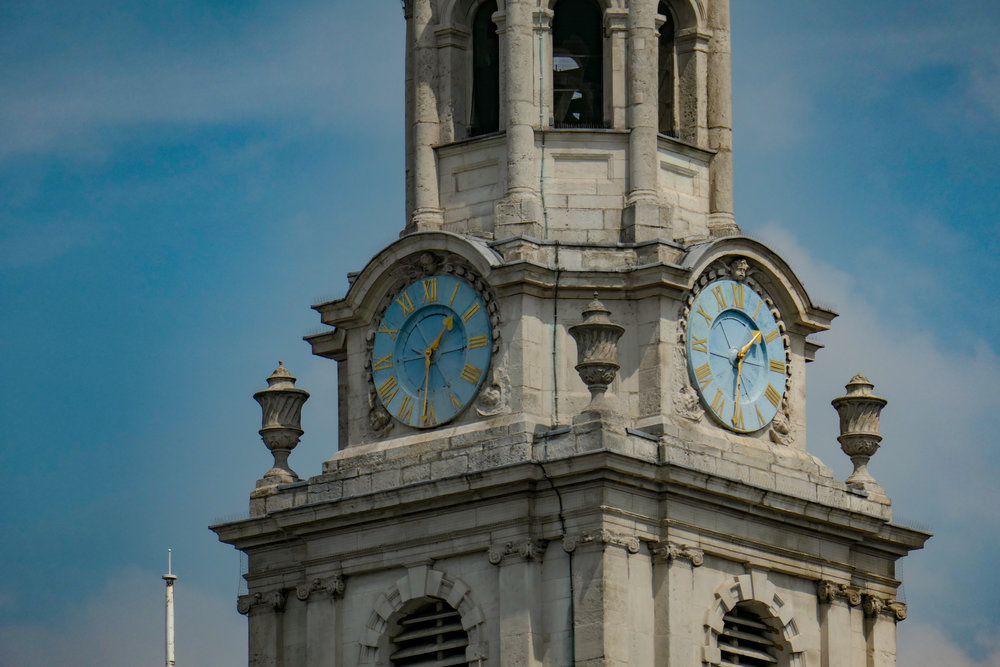
In use
Anyone familiar with Panasonic compacts or the Leica D-Lux or C will feel perfectly at home with the new C-Lux. It is the sort of camera you can stick in your bag (or your trouser pocket) and have it ready and willing to perform herculean tasks which are well beyond the ability of most small point-and-shoot devices. You will obviously achieve better overall image quality with a similarly size m4/3 or APS-C fixed-prime but then you lose the remarkable versatility. If you want maximum versatility and excellent results the C-Lux is the camera for you.
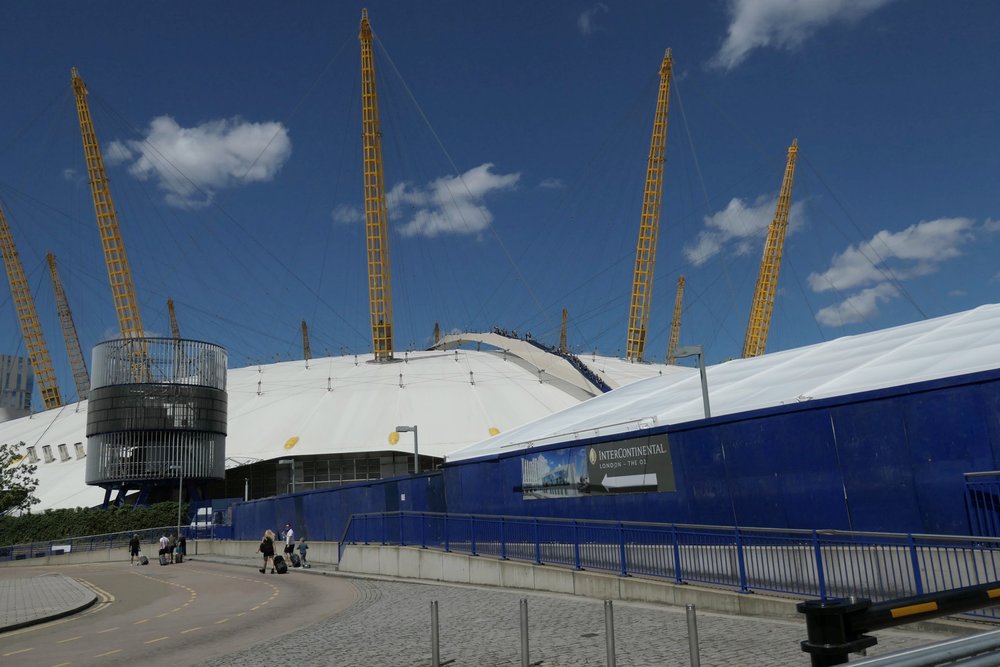

It handles really well, largely thanks to its slightly larger dimensions and feels very solid. The thumb grip and front grip combine to improve stability, something which is very important when shooting at 360mm despite the assistance of optical stabilisation. Without straying into Sony territory, I can say that the C-Lux is more stable in primary terms (ignoring image stabilisation which of course helps enormously) at 360mm than the Sony at 200mm simply because it is a more substantial piece of equipment with better grip.
Older users with less steady hands will notice this immediately when looking through the viewfinder. At 360mm there is visible movement as the camera shakes in the hand and we are relying on the image stabilisation to do its job effectively — which, in the case of the C-Lux it does most of the time. Occasionally, when pixel-peeping a 360mm shot I detected a small amount of camera shake, but that is perhaps not surprising. Blame the operator, not the camera.
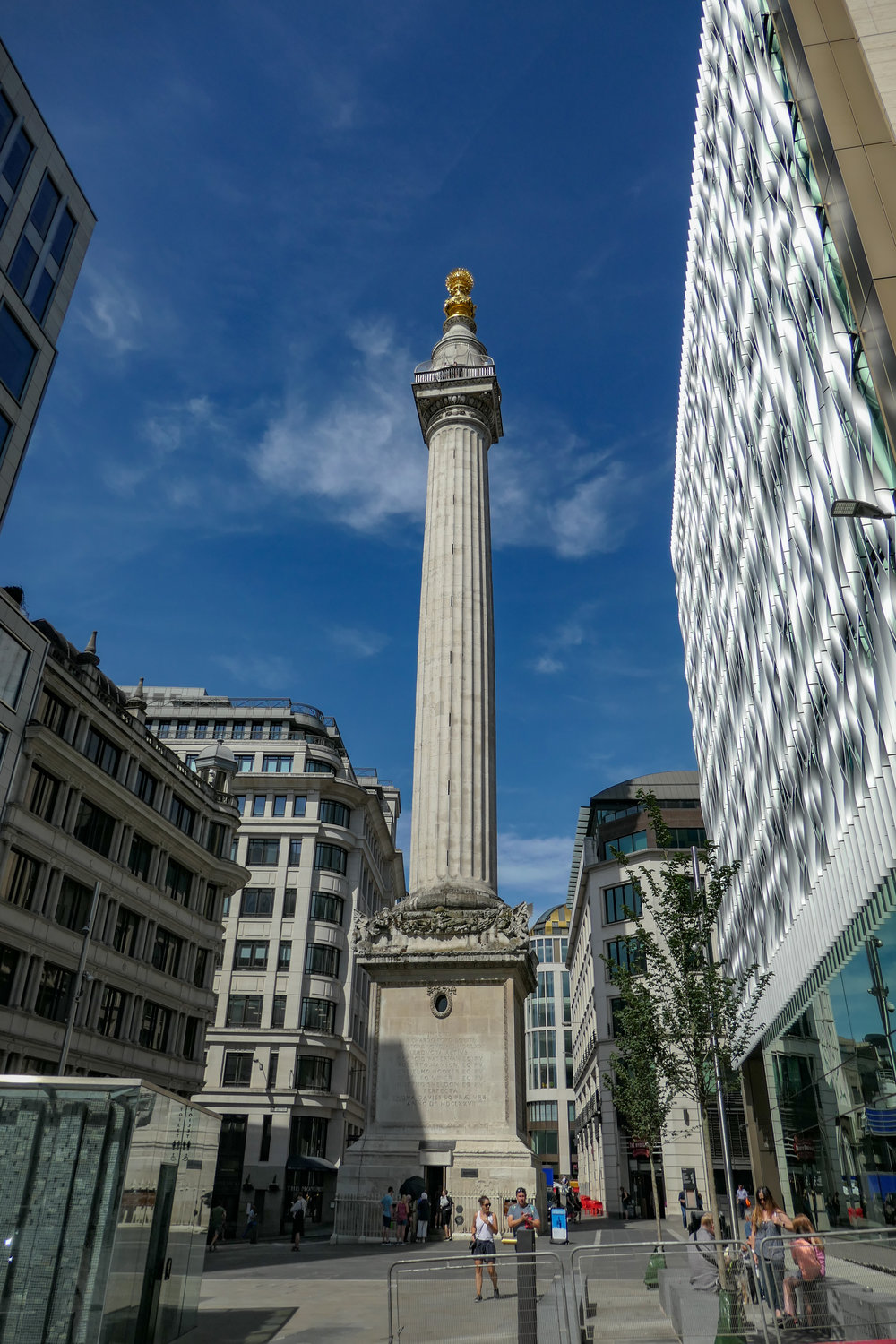
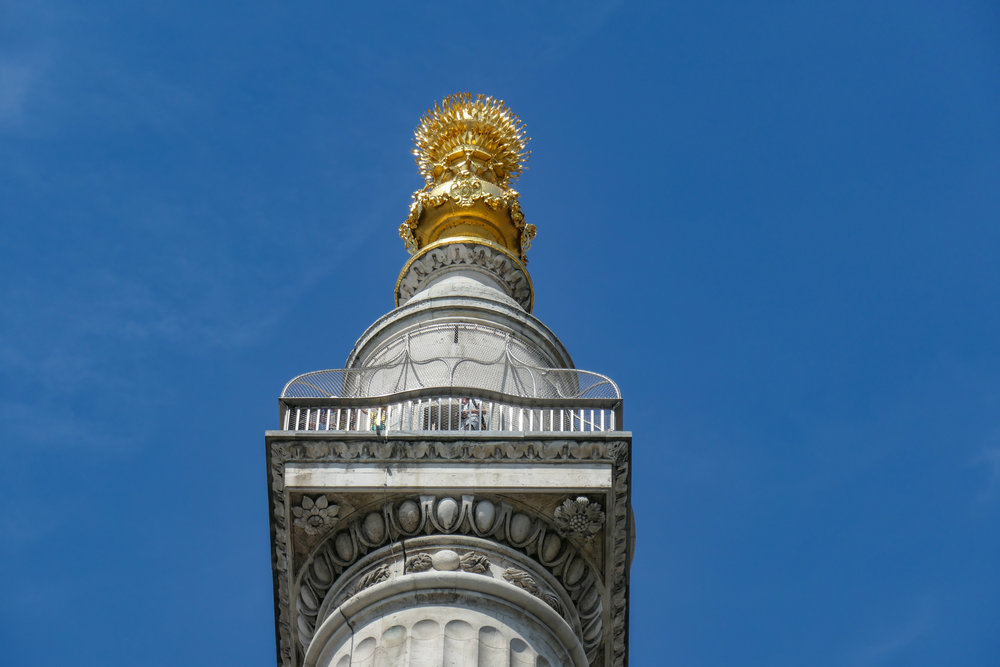

All the controls are precise and solid feeling, with no tendency to jump out of the set position. The presence of the programmable adjustment ring on the top plate is a big advantage in such a small camera and gives the photographer confidence that he can exercise full manual control. I appreciate the dedicated and clearly marked on/off switch although it is oddly sited next to the mode dial. I hate push-button on-off switches as found on many small cameras, including the RX100 series. The zoom lever which is concentric with the shutter button occupies the spot where we normally look for the switch.
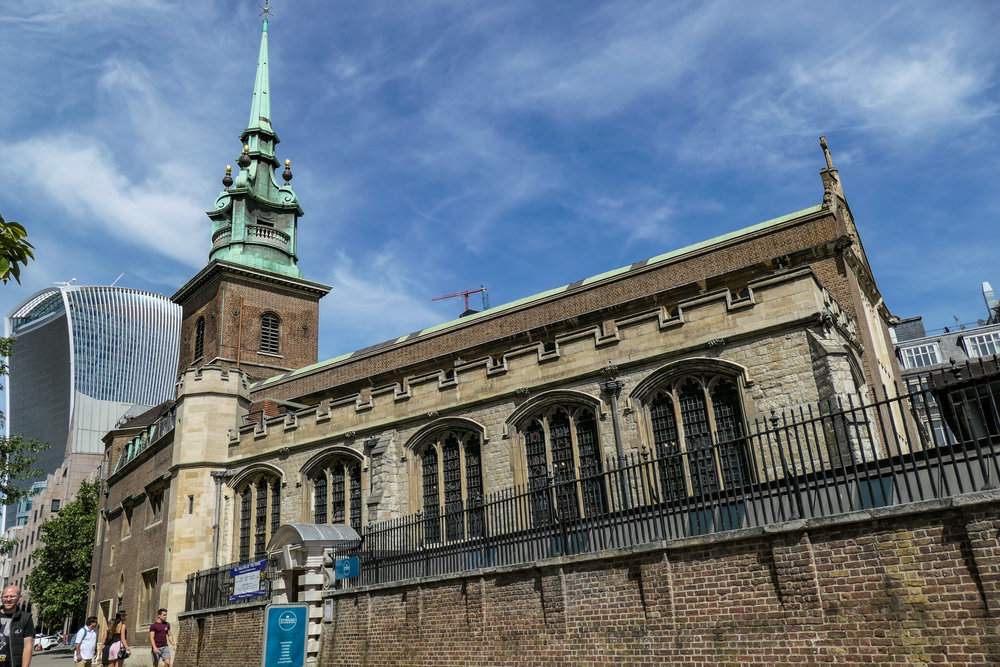
Stepped zoom is one of Leica’s well-tried functions that I absolutely love. Either the large lens ring or the top-plate-mounted zoom lever can be programmed to step zoom and you can set the speed of zoom in the menu — I had it set to fast. The stepped-zoom feature allows the lens to be extended, one flick at a time, to all the standard traditional focal lengths — and then some. The “stops” on the C-Lux are at 24, 28, 35, 50, 70, 90, 135, 160, 200, 250, 300 and 360mm. Phew. You might think this is overkill, but you soon get used to it. The big advantage, from my point of view, is that I can easily envisage the stops, certainly up to 90mm, and quickly select a favourite focal length without having to fine-tune the dial or overshoot the setting. It also helps with metadata in that a given picture is shot at a recognisable standard focal length rather than at, say, 33mm or 66mm.
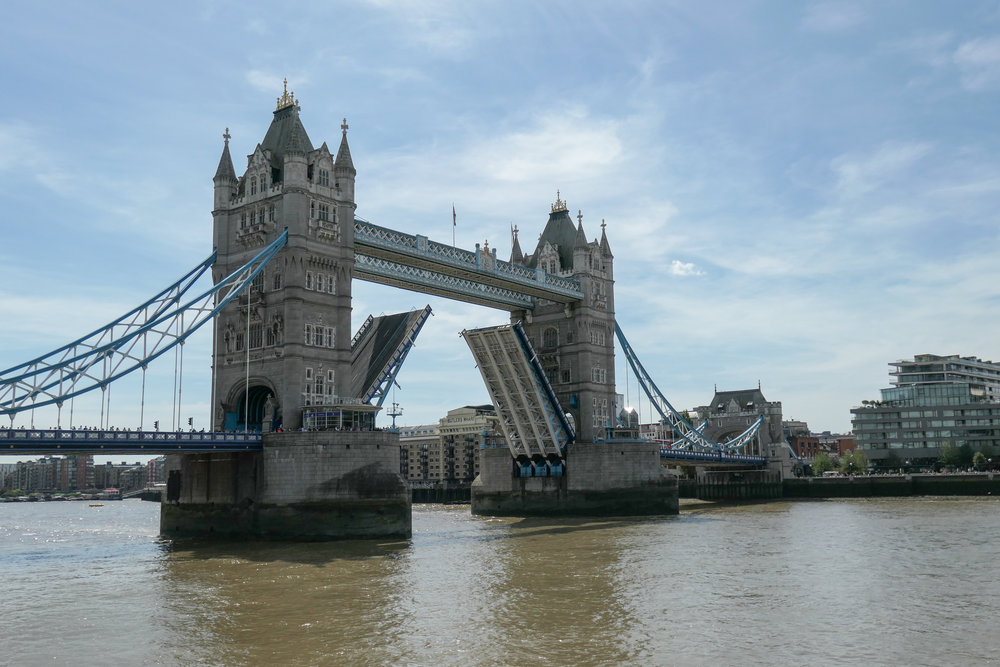
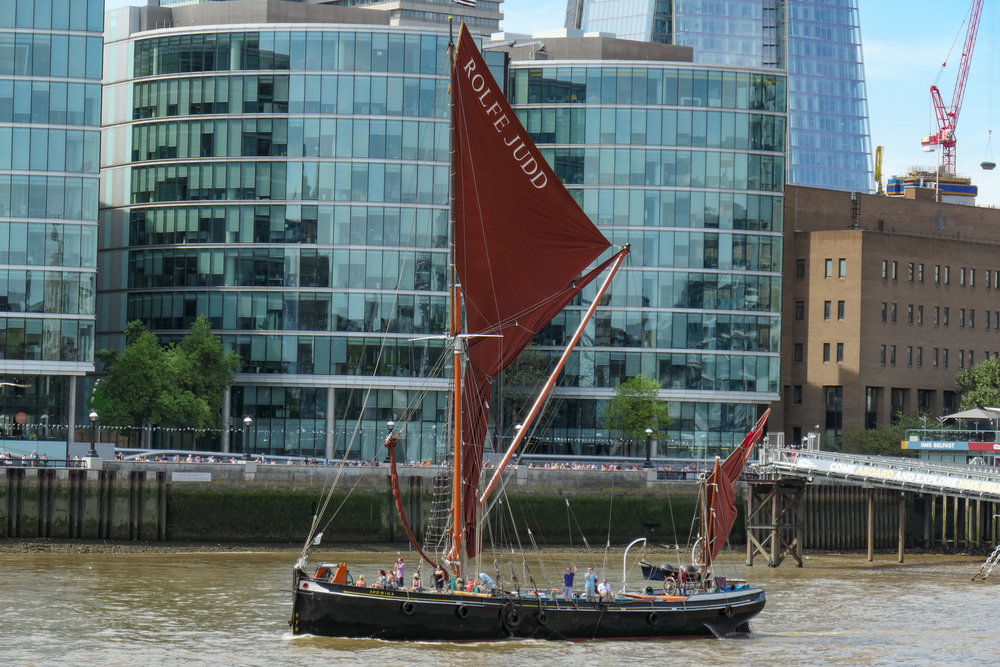


As you can tell, I am a huge fan of stepped zoom. And the system is enhanced by the ability to set the lens to remember the previously selected focal length. I used this all the time and, again, really appreciate the ease of operation that it brings. It means that you can, if you wish, decide to have a 35mm or a 50mm day when the lens is always fixed, despite switching off or allowing the camera to sleep. Used in conjunction with the top-plate-mounted zoom lever, the ring step zoom is in my view the perfect implementation for the keen photographer.
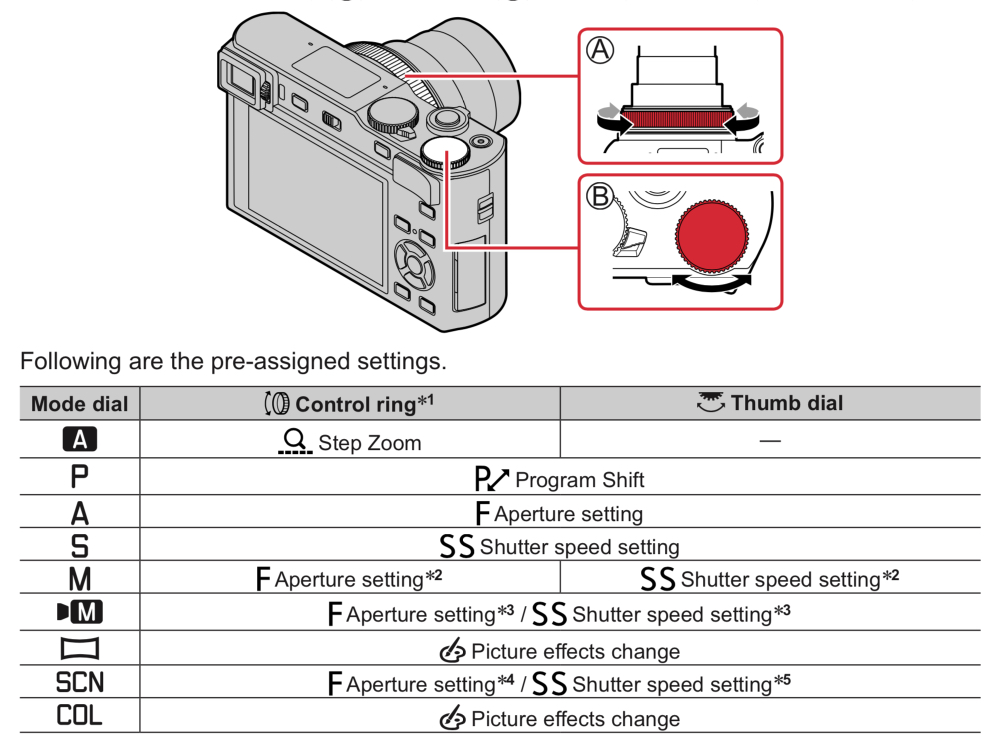
The solid and perfectly damped programmable thumb dial on the top plate is a bonus on a camera of this size. Panasonic has managed to provide all the physical controls you really need. The thumb dial is easy to adjust and the knurled edge protrudes slightly next to the thumb grip for quick and intuitive adjustments.
After experimenting with various control settings during the week I used the C-Lux, I ended up with a regime that perfectly suits my style of photography.
-
Lens ring: Default setting which controls the primary exposure adjustment according to mode selection.
-
Thumb Dial: Exposure compensation
-
Zoom lever: Stepped, fast
It’s tempting to set the lens ring to handle zoom since this is the most natural way of controlling zoom on lenses, but in that event, the zoom lever is wasted since it cannot be reprogrammed. And with the step-zoom facility enabled, the zoom lever is the better tool for the purpose. It can be flicked once in either direction to step to the next focal length. It is more precise. With the lens ring controlling step zoom, there is a tendency to overshoot because the ring is very smooth and fast. By using the lens ring to control aperture, however, it is then possible to reprogram the thumb dial to handle exposure compensation. The dial clicks satisfyingly and is in the ideal position on the camera to handle exposure compensation.
The control buttons on the rear of the camera provide full access to all the features that you select as important. Everything is programmable, as you would expect. A nice touch is a button next to the viewfinder which toggles the finder/screen relationship. There are three consecutive settings — screen only, viewfinder only, auto viewfinder. On many cameras, you have the plunge into menus to change this function. Generally, I prefer to use the viewfinder only, keeping the screen switched off. But it is vital to have that quick button press when accessing menus which are awkward to adjust when seen through the viewfinder.
Autofocus is fast and reliable and, in the main, I used my tried and tested focus-and-recompose method of shooting. For this, I prefer a fixed centre focus point and I am happy to report that it is possible to anchor the spot or area focus dead centre. As with all modern cameras, there are the usual face recognition options as well as the possibility of moving the focus point around the screen. If you use the touchscreen (I left it switched off since I am not a fan of touchscreens) you can choose the focus point by touch and, if you wish, allow it to trigger the shutter.

The C-Lux gives you all the tweakability and options that you expect on a modern camera but, unlike some, it can be tamed to act brilliantly as a simple device, the digital version of a mini film camera. It can be just as focused as, say, the M10 or M7, but has hidden depths if you are an inveterate fiddler.
I should just mention the Panasonic Post-Focus facility which is available on the C-Lux. Although I have had the option to use the this on other cameras but not tried it, I did make a brief foray into the system on the C-Lux. If the Post Focus function is enabled the camera appears to take a series of images as the focus area moves automatically around the screen. On playback, you can choose the image which shows the best focus. I soon tired of this since it makes the process of taking a picture longer and, in any case, I use focus and recompose and always endeavour to choose my subject. Focusing an image is one of the joys of photography and it is one of the reasons I love my M lenses. Nevertheless, I can imagine instances where this facility might be useful.
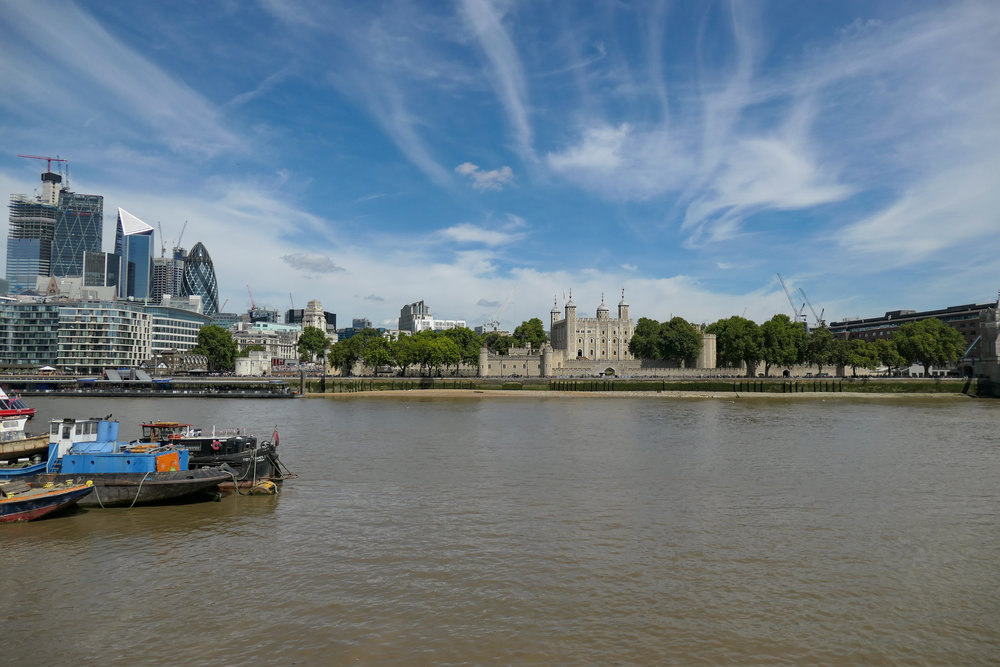


I also used the manual focus system for a short time and found it very easy and straightforward, assisted by focus point magnification. When in manual mode the lens ring defaults to focus, of course, and the magnified image occupies centre screen. The level magnification can be adjusted and focus peaking is also available. A clear distance scale accompanies the magnified image although I found it confusing to have infinity on the left and macro to the right. I always envisage the opposite.
Image quality
Jonathan Slack’s Greek portfolio provides a graphic example of the image quality you can expect from the C-Lux. In general travel use, this is a camera capable of producing very attractive results. I certainly have no complaints and have been impressed overall with the capabilities of the sensor in comparison with micro four-thirds.
This isn’t a technical assessment of the image quality of the lens. Other reviewers have covered the TZ200 in greater depth and, again, I would refer you to the sample images. When we are presented with such an extravagantly long zoom in a tiny camera there is always the suspicion that compromises have been made. I am sure they have been in this case. For instance, the directly comparable 24-400mm lens of the Leica V-Lux (Panasonic FZ1000) is much bigger and this is not entirely because of its faster aperture range.


Setting these possible compromises aside, the results obtained from the C-Lux ensure that it is a great all-round travel companion. Leica claims that the V-Lux is the Swiss Army Knife of cameras and, if this is so, the C-Lux is surely its Lichtenstein Army Knife.
A dedicated tool, a bigger knife or a sturdier hoof-stone extractor will probably do a marginally better job, just as would a full-frame camera with a bagful of expensive prime lenses. But it is a case of horses for courses, and the C-Lux manages to perform the enviable trick of packing camera, lenses and horse’s hoof into one attractive and handleable pocket device.
That it manages to do this so effectively, producing such good results along the way, makes it a very worthy contender for the accolade of the best pocket travel camera.

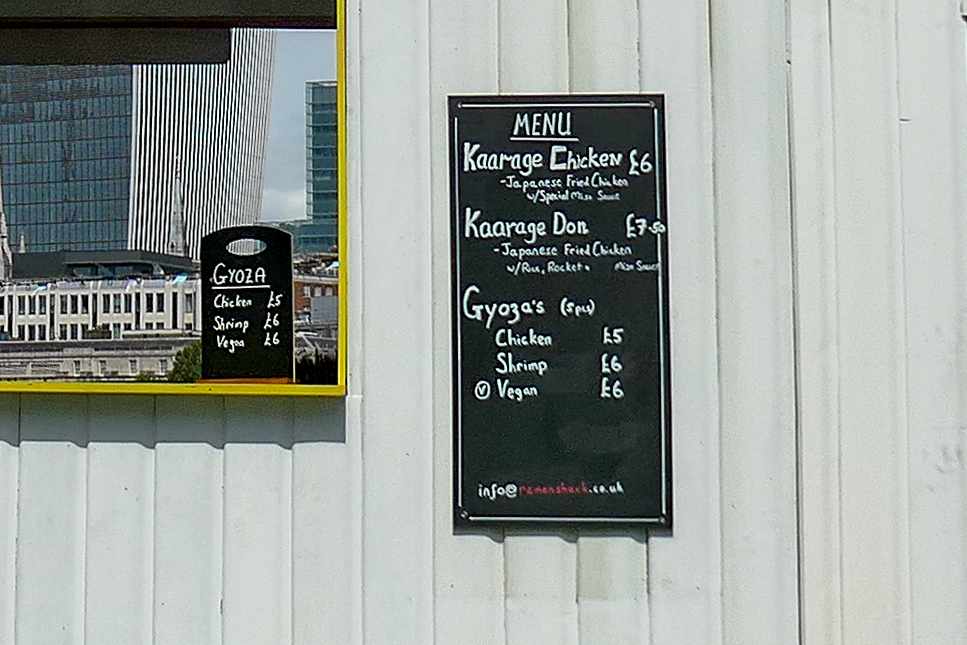
The dynamic range is excellent from a 1in sensor and it is surprisingly easy to recover detail from underexposed areas. And I love the colour rendering even from the standard-setting JPGs. I left JPGs deliberately on the standard setting, without the attempt to enhance in-camera processing, but made some adjustments, mainly to enhance contrast and recover shadow where necessary. But I did nothing with the colours — throughout this review, they are as delivered by the camera.
Battery and power
The C-Lux has a respectable battery life of around 300 shots (better than the Sony RX100, by the way). The reason for this is that the bigger body of the Leica can accommodate a more powerful battery. With the Sony, the minimalism comes at a price. Even so, a spare battery (which Leica didn’t supply with the review camera) is recommended. On one or two occasions during the week, I nearly ran out of power towards the end of the day and a second battery would have been a comfort. On my last excursion, to the South Bank, I did run out completely and had to head for home an hour or two earlier than I intended. If I owned this camera I would definitely carry at least one spare battery.
One feature of the camera of which I thoroughly approve is the in-camera charging system. In my opinion, all cameras should offer this option. It is my safety net when travelling because the ubiquitous USB cable (which can be powered by any USB socket or phone charger) is something you can buy easily and cheaply anywhere in the world. So if you forget the charger adapter or don’t have the required plug, the in-camera charging comes to the rescue. Apart from that, however, it is simply convenient to be able to plug in the camera at the end of the day, just like a smartphone or an Apple Watch, and know that it will be ready for action the next day.
With some cameras — the M10 is a prime example — forgetting the battery charger when setting out on an assignment or on vacation is a major disaster. Not only is it going to be almost impossible to find a replacement, unless you are visiting a major city, it is painful to the wallet.
It doesn’t worry me that the C-Lux is not supplied with a battery charging pod. It does come with a USB adaptor and, of course, the charging cable. In-camera charging is perfectly acceptable in my book and, if I do wish to have extra charging options I usually buy a cheap two-battery charging pod from Amazon. Having the ability to charge two batteries simultaneously is a great option when travelling, but you can get by with that little USB cable in an emergency.

Why Leica?
It is no secret that the Leica C-Lux is a rebadged version of the Panasonic Lumix TZ200 (ZS200 in some markets — why Panasonic insist on giving every product two names is beyond me). So why buy the Leica instead of the Panasonic? This time around, there aren’t even major styling differences to tempt you to the red dot. So why do I think the Leica is the better buy?
The Panasonic Lumix is currently selling for £730 (it has been out for several months and is already slightly discounted). The Leica is new and it’s being listed at full suggested selling price of £875, thus £145 or just under 20% more than the Lumix. At the point of purchase, then, the Panasonic is a more attractive buy.
Fast forward to selling time, however, and the Leica will provide a much better return (because of Leica’s brand name; it does work) and you will almost certainly recoup that £145. In the meanwhile you will have had the benefit of using a Leica rather than a Panasonic; and you may have benefited from the better, more human after-sales service that comes with the German brand.
It’s a bit like choosing a car. You have to look at whole-life cost. Many cars will lose a vast chunk of their value over the first year, others will do much better. Some will still have a good value after even ten years.
This is why, if you fancy a TZ200/C-Lux, go for the Leica and invest a little more. You will come to realise it is a better deal.
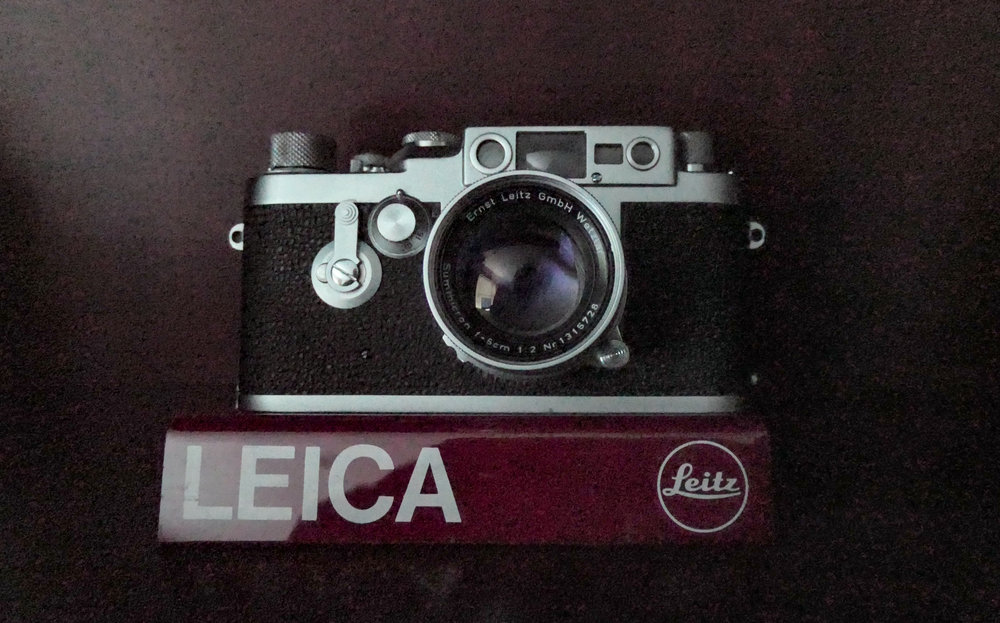









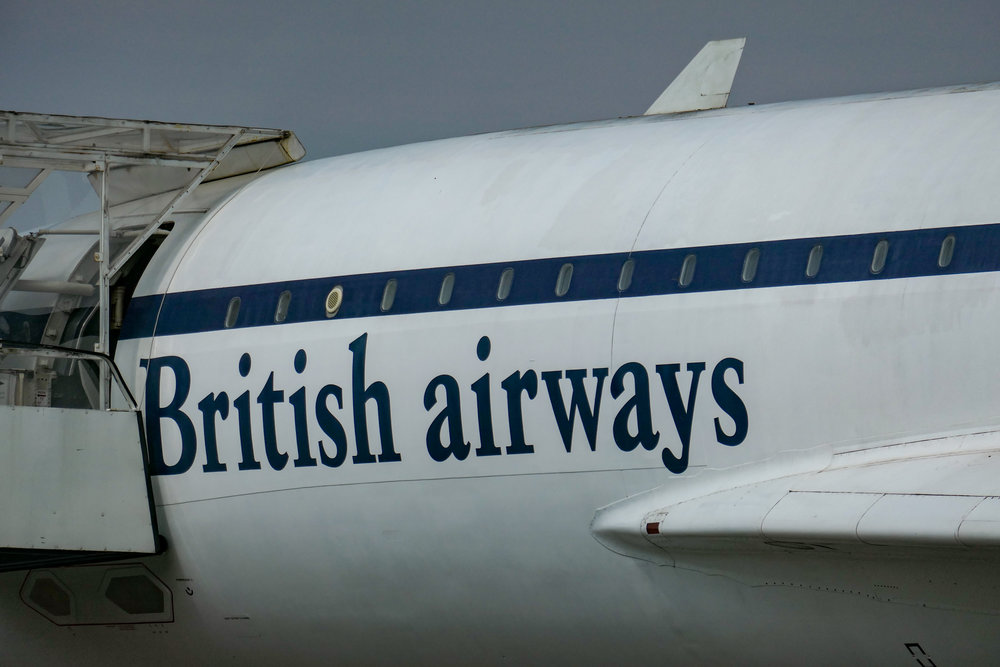
As a travel camera, the C-Lux will handle everything you throw at it. Sure, the lens is a tad on the slow side but I wouldn’t worry overmuch about this. For that zoom range, there have to be a few compromises. But I can unreservedly recommend the C-Lux as a very sensible all-rounder that, at a pinch, will fit in a trouser pocket. The C-Lux does what its designers set out to achieve — a quart in a pint pot that covers almost all bases.
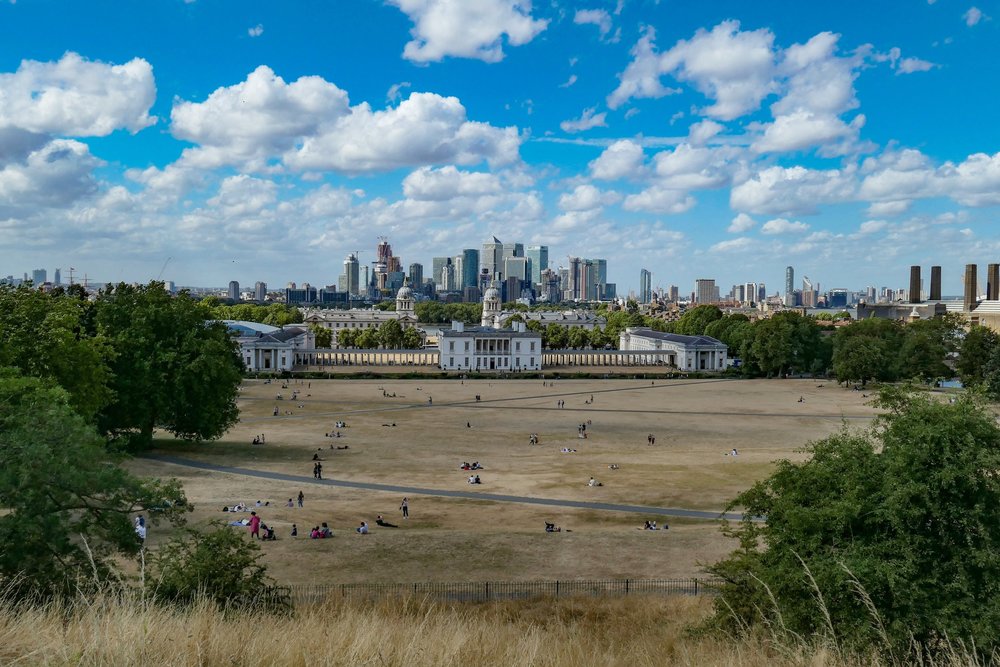
______________
- Subscribe to Macfilos for free updates on articles as they are published
- Want to comment on this article but having problems?
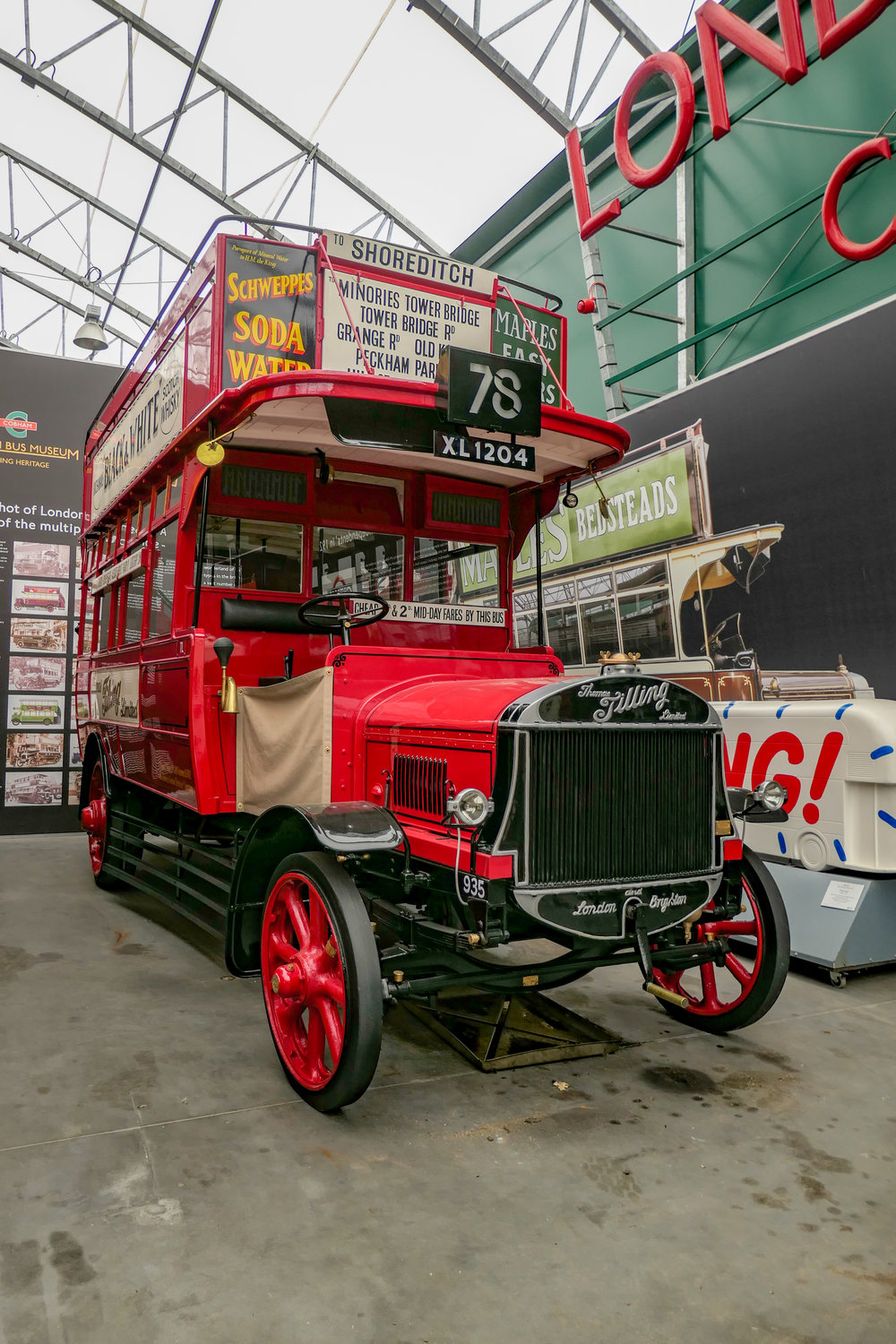










I think that is St Sepulchre rather than All Hallows
Nope, as you were, my mistake. I’ll shut up now.
Don’t worry, David. I constantly have these moments. And I’m always glad to have corrections and comments so I can update the offending test (if it is offending).
I recently purchased the Panasonic ZS200, and from researching it, reading articles such as yours and others, realized that it is virtually identical to the Leica C-Lux. (I don’t regret purchasing the Panasonic, I put the money saved into something else.)
Technical question: Since the two cameras are practically the same, would it be possible to successfully flash the Panasonic ZS200 with the Leica C-Lux firmware and essentially have a functioning Leica camera? (I realize that would probably void the Panasonic warranty.) And if it is possible, would there be any benefit to running Leica firmware vs. Panasonic firmware?
I mainly ask out of curiosity, but if I knew for certain it wouldn’t destroy my camera I would be tempted to try it.
Dear Vince,
I am sure that this wouldn’t be possible and, in any case, there isn’t much difference as far as I can see — apart from the Leica logo instead of Panasonic. There have been hints that the Leica has some differences, perhaps a variation in standard jpeg output, but I am not convinced.
Basically, I would just enjoy the ZS200 and think of it as a Leica! You have the Leica-branded lens and I am sure your photographs would be identical to those from the C-Lux.
I recently purchased the C-Lux, been road testing it some and your review gave me some great insights that I was unaware of. Like the viewfinder toggle. At this point only have one wish. Some third party – please put out a new manual.
Thanks for the thorough article!
Thanks, Mark. I hope you enjoy the C-Lux. It’s a great little camera and I thoroughly enjoyed using it.
Gee Mike, what a practical review. This piece should embarrass most professional camera reviewers.
The long lens would come in very handy for spontaneous on-water shots of boats, surfing, wildlife etc. I wouldn’t mind tossing it into the pack I use on business trips.
Thanks, Tuco. Yes, the C-Lux is ideal for tossing in a corner of the bag. And it’s even good enough to rely on completely when you want to travel light.
This looks like a pretty good pocket camera and it’s obvious qualities auger well for the future, particularly in regard to that other Panaleica, the D-Lux.
I’ve just seen your revised caption, Michael: "..I wonder how you instruct Tower Bridge to rise on command, scattering tourists and buses in every direction?.." ..well, you fax the Bridgemaster the day before, and notify her or him of the time(s) when you intend coming through, and the height of your mast – or what it will be, according to how high the tide will then be – to state that you wouldn’t be able to get through with the bascules (the two bridge halves) down ..and at the appointed time the Bridgemaster will call you on the (marine) VHF radio and ask if you’re there, and when you reply that you are s/he will ring a bell to warn the traffic that the gates across the roadway will close, and then they do, and then the bascules rise, and you proceed through.
Simples.
Hmm thought it must be something like that and thanks for all the information. I don’t think I will need to contact the Harbour Master any time soon but it’s good to know…..
What a great review! Well done, Mike.
I think I may have mentioned in Jono’s article that this is the first time I thought the Leica version made some sense over the Pana. I still think that.
Beaut images too.
Thanks Jason, the C-Lux review was fun to do. Having a review camera for a week forces me out to take pictures. Currently I am sitting on a Hing Kong Ding Ding (tram) with the RX100 in hand. In many ways it uses a diametrically opposed style to the C-Lux and I am spoiled for choice.
Nice article, and some nice shots in there too – nice to see someone shoot Greenwich in all of its recent yellowness. I have been driving past this every week, and putting off shooting it as I await the return of green grass, which by the amount of water that has dropped over the South East this week shan’t be too long.
Have ordered my next camera too – struck a decent deal in the end.
Hope Hong Kong is now being more fun than earlier in the week.
Dave
Thanks, Dave. With the camera in my hands for only a week I didn’t have the luxury of waiting for rain. Still, it’s a good record. It’s the first time I’ve ever seen a London park looking as parched as this.
Congratulations of your new camera decision. I am sure we are all looking forward to hearing more in due course.
Yes it is the first time I have seen Greenwich looking like it does. But then it is a long time since I had seen North Yorkshire looking extremely yellow in patches too.
I will naturally inform all on the new camera front once I have concluded the deal, which I hope will be in the coming days. 🙂
What a great write up!
Thanks John.
Mike
Great review. Thanks. I’ve been using a CLux, acquired from Red Dot, for the last few weeks, which replaced my C in the ‘pocketable’ role. The C was a little too small and fiddly imho, but nevertheless a good little compact and capable of good results. But the CLux is a much better (and dearer of course) tool. Really pleased with mine so far, and it’s seen more use of late than my M10. even when the two are carried in tandem.
Thanks for the tip on stepped zoom. I hadn’t realised this.
Hopefully see you in Goswell Road sometime soon.
Best wishes
John
Thanks John. As you see, reader John Nicholson mentions the C and he’s a great fan. The C-Lux is definitely less fiddly and easier to use as a real alternative to a bigger device. The Sony, which I am currently using in Hong Kong, is a sort of in-between size and is more fiddly than the C-Lux. But as a travel camera (and companion to the CL) it does have advantages.
How would you compare image quality of the C-Lux with your V-Lux?
See you soon in Goswell Road.
Mike
You do make life difficult, Mike! The photos you display are absolutely convincing, and yet I don’t know if they are better than my Leica C with a shorter zoom, smaller sensor but wider aperture. A couple of years ago my dream team for touring was the C plus the venerable V-lux 1 with 35-400mm internally focussing zoom. The C was go anywhere, the V-lux 1 was dragged along if I knew I was going to want that kind of reach. (Handles beautifully) For me there are two potential deal-breakers in relation to the C: (1) the fixed screen; (2) does the C.lux have that marvellously useful "scene" mode, "through window", which is a godsend on car or bus journeys (trains don’t usually keep their windows as clean!) ?
John, at lease one friend who owns the C and has tried the CL has said that the C produces sharper images. As for the rest, it all depends what you are going to do with the images. The one-inch sensor is going to produce bigger prints and will look better on a really big screen. A reader printed one of my recent RX100 VI shots up to A3 and was astounded by the quality (it was the station master from Chinnor).
Other physical factors come into play as you suggest and these are aspects only the individual can assess.
In my usual cavalier fashion I didn’t try the scene modes and I am not sure if the through-glass shooting mode is there. I will check the manual for this when I get back to London. It’s quite possible it is on the C-Lux if it was on the C. I must also check the RX since I’m currently using it in Hong Long and through-the-glass would be useful.
"..this rather disappointing craft.." ..splutter-splutter!
..B-but that’s the beautiful Thames sailing barge Ardwina! ..No disappointment there! ..but perhaps it’s just "beauty in the eye of the beholder"..
Must be a case of ignorance is bliss. I’ve never heard of the craft but from what you say she is a suitable reason for traffic distribution. I will add a bit to the caption and credit your eye for detail! Thanks.
Er, "..note that the camera incorporates a microphone (which is absent from the Sony RX100 VI by the way).." ..not so, Michael.
Perhaps you meant "..note that the camera incorporates a microphone SOCKET (which is absent from the Sony RX100 VI by the way).." ..but that’s not so either: neither the C-Lux nor the RX100Mk6 has a socket for an external mic, but both DO have built-in stereo mics!
Ah! Thanks for that. This is what comes if not actually taking much interest in video. I got my microphones mixed up with my sockets. I will put to right and thank you.
You have convinced me! Great little rig,thank you.